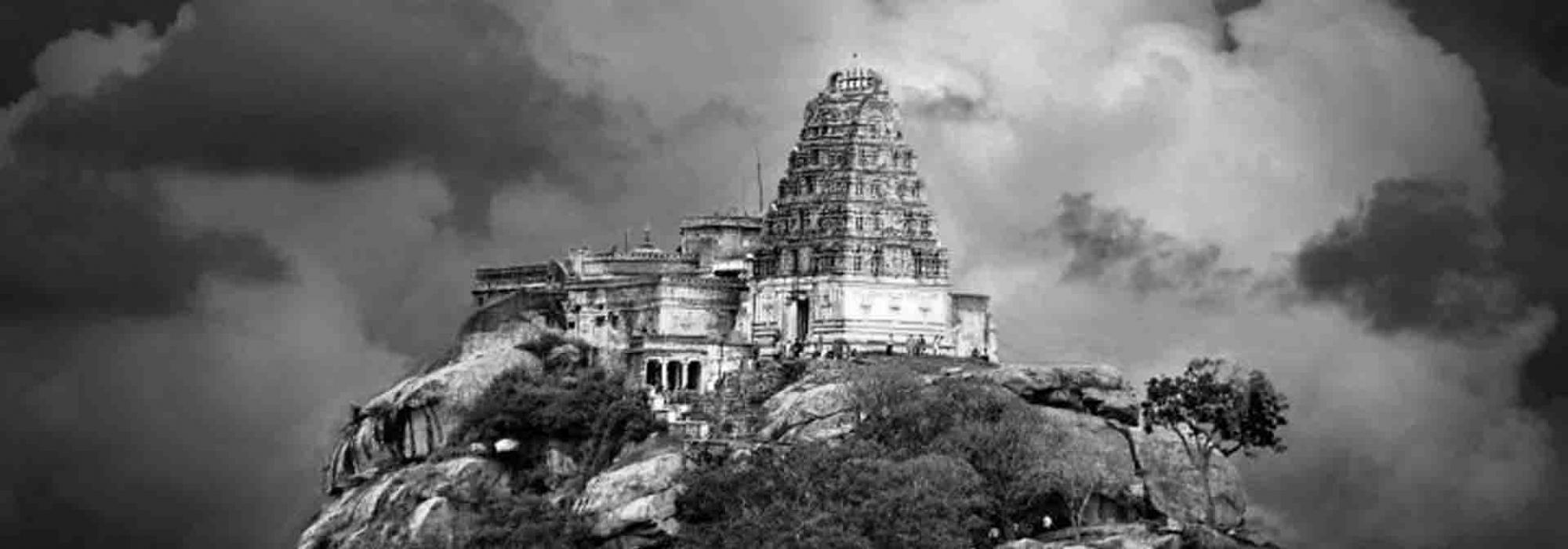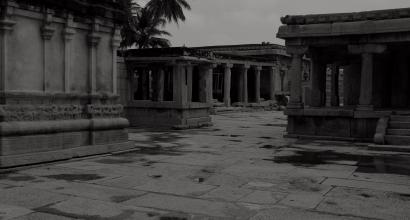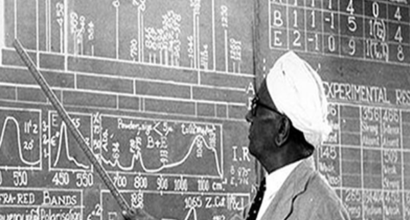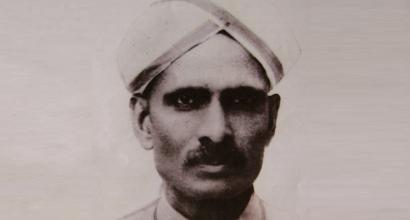The Muzrai Amendment
In 1891, the government decided that a separate body needed to be established for regulating the activities of the Muzrai institutions, namely temples, maṭhas (Hindu monasteries that include a temple, a school, and residential facilities for ascetics), choultries (resting houses), mosques, and other institutions associated with god, religion, and dharma. The people’s representative council had suggested several times that such an arrangement was essential. Accordingly, Diwan Seshadri Iyer constituted a new post called the ‘Muzrai Superintendent’ within a short period and invited Srinivasacharya to occupy it. In the beginning, it was estimated that the job associated with the post could be completed in three to four years. Once into the job, its complexity and importance became more evident. Srinivasacharya retired from the post in April 1901. He was awarded the title of ‘Rai Bahadur’ as a mark of appreciation for the dedication, skill, and enthusiasm that he had displayed while he held the post. Moreover, the title ensured that he and his achievements would be etched in the people’s memory.
Here are some of the improvements he ushered in – repairing dilapidated parts of temples; placing windows and ventilators at appropriate places to ensure good light and ventilation; bringing the lands that had been donated to the temples under the vigilance of the government or temple arcakas (officiators, caretakers, people who are responsible for the worship at the temple); taking stock of the jewellery, utensils, and vehicles that belonged to the temple and appointing supervisors to take care of them; documenting the procedures prescribed in different āgama traditions – śaiva, vaiṣṇava, and smārta – and making these available to the arcakas; he ordered the collection of mantras, stotras, and rājāśīrvāda vākyas and had them published as a book, which was then presented to the arcakas; he got the temple rituals such as naivedya, dīpārādhanā, and other procedures documented as permanent records; he regulated the activities of the temple orchestra and dancers. The arrangements he made included these and many more. A Board of Dharmadarshis was appointed at every temple, as per his advice. I have heard about the pitiable state that our temples were in before he came in. In a certain popular temple, when the Koṭhārotsava was going on, there would hardly be ten men near the deity while thousands would be found crowding near the devadāsis.
When mantras were being chanted within the temple, lustful activities and thievery would take place in shady spots around the temple premises. Several temples were dark and dusty inside and it was difficult to even enter them. The land, jewellery, and clothes that were dedicated to the deity were being exploited by some people. It was Arcot Srinivasacharya who got rid of such maladministration and cleansed the system. Even today, one can see the result of his hard work at Nanjangud, Melukote, and other places. It is a result of consistent work that involved tutoring and disciplining the system for over ten years. People to this day recollect with gratitude the windows and ventilators that Srinivasacharya got installed at different temples.
I have heard that Srinivasacharya also served as the head of the Registration Committee for some time.
Srinivasacharya was not only smart but was also efficient in his work. He was not merely efficient at work but also had a great taste for life and arts. He was sincere and pure at heart. After his retirement from work, he divided his time of the year into two – he spent the colder half of the year in Srirangam and the summer in Bangalore.
Taste for Life
Srinivasacharya had great love for music. He had appointed four people to sing at concerts regularly – Dakshinamurti Shastri of Kollegal, Karur Krishna Rao, Subbarayacharya, and a vaiṇika. He hosted music recitals twice or thrice a week. The concert routine was as follows.
[caption id="attachment_13826" align="alignright" width="489"] Nanjangud Temple[/caption]
Nanjangud Temple[/caption]
Srinivasacharya had a small tambūri (a drone instrument used in Indian classical music; also popular as tānpura) that was well-tuned. The singer was to be present at Srinivasacharya’s residence at four, sharp. The cook would arrange for water for the guest to freshen himself and prepare hot coffee or milk as per their needs. The singer would then sit in the living room along with the tambūri. The audience, which never exceeded about five or ten, would be ready by then. Srinivasacharya would ask the musician, “What are you going to sing today?” The singer would reply with the choice of his first rāga, say Kalyāṇi, or Kāmbhoji. Srinivasacharya’s reply would be, “So be it! After that, if time permits, please sing such-and-such a rāga. It has been long since I heard it.”
Accordingly, the singer first sang whatever he had planned for the evening and would then sing what Srinivasacharya requested him to sing. There were certain conditions put on every singer – he should not sing for more than an hour or an hour and fifteen minutes; rāgas had to be elaborated well; svara-saṅgatis were to be limited and were to be predominant in emotion; they were to sing in the medium tempo (cauka-kāla). A day’s concert was to have a maximum of two kṛtis (kīrtanas), rarely three – all musicians adhered to these rules. Srinivasacharya silently walked about listening to the concert. When he felt contented, he would indicate the musician to stop, with a nod of his head. After the concert, at about five or a quarter past five, the musicians were to go into a room reserved for them. Srinivasacharya would go there, pay them an honorarium, and felicitate them – all in private. The cook would then serve them snacks and see them off. Such was the arrangement. This went on for many years. It was a pleasure for the musicians to go to his home and perform concerts. They treasured his words of appreciation and were thrilled to receive his feedback.
Srinivasacharya started the tradition of conducting Nāgasvaram performances one evening of the week, every week in municipal parks and other public places. It appears that the tradition continued for about twenty years. I have attended the concerts in Little Lalbagh several times. The Nāgasvaram artists possessed great pride in their vocation and respected traditional knowledge. Hundreds of people gathered to listen to their concerts. I don’t know where such dedicated artists have vanished today.
Many citizens would go to meet Srinivasacharya. Sub-judge P Singacharya was among the people who had good acquaintance and friendship with him. The famous Sanskrit scholar Chappalli Vishveshvara Shastri also visited him often. Many businessmen and rich men went to see him frequently. I have seen prominent Muslims too paying respects to him at his place.
Just as he was magnanimous in his character, so was his physique. He did not speak much. What little he spoke always carried a lot of weight. He had a graceful and majestic countenance. Every evening, he took a stroll along with his friends in Lalbagh.
I have met him only about three or four times. Each time, the room in which I met him had heaps of fresh jasmine buds on a big plate. Such is my memory of him.




































